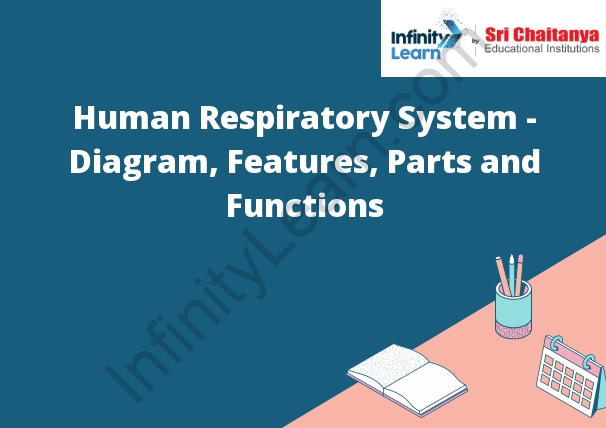Table of Contents
What is the Human Respiratory System?
The human respiratory system is the collection of organs that allow humans to breathe. This system includes the nose, mouth, pharynx, larynx, trachea, bronchi, and lungs. These organs work together to bring air into the body, extract oxygen from the air, and expel carbon dioxide.

Human Respiratory System Diagram
The human respiratory system diagram illustrates the respiratory system of a human. The respiratory system includes the nose, mouth, pharynx, larynx, trachea, bronchi, and lungs. The respiratory system is responsible for bringing oxygen into the body and removing carbon dioxide. The nose and mouth are responsible for bringing air into the body. The pharynx, larynx, and trachea are responsible for transporting air to the lungs. The bronchi are responsible for transporting air to the lungs’ alveoli. The lungs are responsible for exchanging oxygen and carbon dioxide between the blood and the air.
Features of the Human Respiratory System
The human respiratory system consists of the lungs and the air passages leading to and from them. The lungs are two thin-walled organs that are filled with air when the person breathes in. The air passages are divided into two parts: the upper airways, which include the nose and throat, and the lower airways, which include the windpipe and the air sacs in the lungs.
When a person breathes in, the air passes through the upper airways and down the windpipe into the lungs. The air sacs in the lungs fill up with air, and the person exhales, or breathes out, the air from the lungs.
The human respiratory system helps the body to get oxygen from the air into the blood and to get rid of carbon dioxide from the blood. The oxygen is used by the body’s cells to make energy, and the carbon dioxide is removed from the blood and exhaled from the lungs.
Respiratory System Parts and Functions
The respiratory system is responsible for taking in oxygen and releasing carbon dioxide. It includes the nose, mouth, throat, lungs, and diaphragm. When you breathe in, the diaphragm contracts, which causes the lungs to expand. This draws in air, which passes through the nose and mouth into the lungs, where the oxygen is absorbed. When you breathe out, the diaphragm relaxes, which causes the lungs to contract. This pushes the air out of the lungs, and the carbon dioxide is released.
Respiratory System Functions
The respiratory system functions to bring oxygen into the body and to remove carbon dioxide. The lungs are the primary organs of the respiratory system. They are located in the chest cavity and are surrounded by a pleural membrane. When the lungs expand, the air pressure inside them is greater than the atmospheric pressure outside, and air is drawn into the lungs. When the lungs contract, the air pressure inside them is less than the atmospheric pressure outside, and carbon dioxide is expelled from the lungs.
Respiration in Humans
The process of respiration in humans begins with the inhalation of air into the lungs. The air is then brought into contact with the blood in the lungs, where it picks up oxygen. The oxygen-rich blood is then circulated throughout the body, where it delivers oxygen to the cells. The cells use the oxygen to produce energy, and the carbon dioxide that is produced is then expelled from the body in the breath.
Issues Affecting the Respiratory System in Health and Disease
The respiratory system is responsible for bringing oxygen into the body and removing carbon dioxide. It can be affected by a variety of health conditions and diseases, including infections, allergies, and cancer. Infections can cause inflammation and swelling of the airways, making it difficult to breathe. Allergies can trigger an asthma attack, which can restrict airflow and make it difficult to breathe. Cancer can cause tumors to grow in the lungs, which can reduce the amount of air the lungs can hold.
Diseases of the Lungs and the Respiratory System
The lungs are a pair of organs in the chest that are responsible for breathing. The respiratory system is the network of organs and tissues that allow us to breathe.
There are many diseases of the lungs and respiratory system. Some common diseases are pneumonia, bronchitis, and lung cancer.
Pneumonia is a lung infection that can be caused by a variety of different bacteria, viruses, or fungi. Symptoms of pneumonia include chest pain, coughing, shortness of breath, and fever. Treatment for pneumonia includes antibiotics, rest, and fluids.
Bronchitis is a lung infection that is caused by a virus or bacteria. Symptoms of bronchitis include coughing, chest pain, shortness of breath, and wheezing. Treatment for bronchitis includes antibiotics, rest, and fluids.
Lung cancer is a cancer that starts in the lungs. Symptoms of lung cancer include coughing, chest pain, shortness of breath, and wheezing. Treatment for lung cancer includes surgery, radiation therapy, and chemotherapy.








